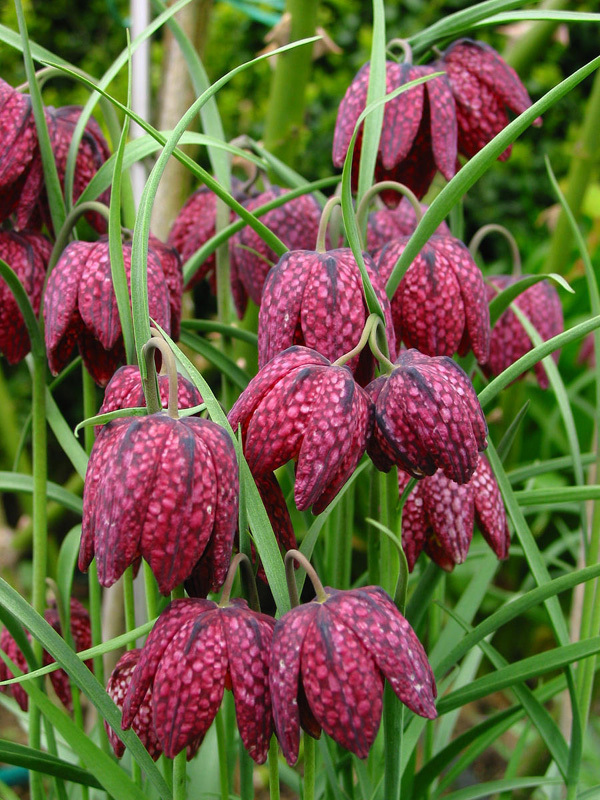Diana George Chapin — who with her mother, Sandy George, runs the Heirloom Garden of Maine in Montville — loves fritillaria. Her particular favorite is Fritillaria meleagris, also called the checkered lily, which has small, checkered, bell-shaped flowers in maroon-purple and white.
“This is just a stunning little plant,” she said when I called her recently. “This bulb dates to 1575. You can imagine some monks in a monastery in Europe looking at this plant, and you have a connection with someone living hundreds of years ago. That is the romantic side of gardening.”
Chapin said the first time she planted these bulbs, she forgot where she had put them in her garden. “I was out working in the spring and gasped, and said, ‘What is that beautiful thing?’ “
Another fritillaria she likes is a little younger: Fritillaria michailovskyi, which comes from Turkey. It has reddish-purple blooms with a yellow edge and a yellow interior.
Fritillaria bulbs are small, just a bit larger than crocus bulbs but smaller than Narcissus bulbs. The price in the Heirloom Garden catalog is five bulbs for $1.75 and 10 bulbs for $2.50. Just a hint: Spend the extra 75 cents. Not only is it a bargain, more will look better for naturalizing.
The bad news is that the Heirloom Garden stopped taking orders for fall-planted bulbs on Sept. 18.
But give them a call at 342-2116 or email them at info@theheirloomgarden.com, and you will get the company’s holiday catalog pretty soon and its spring farm catalog in January. And you will be used to the company by the time you get its annual autumn catalog next July, when you will be able to buy these bulbs.
The company website is theheirloomgarden.com. They take orders by mail, phone and email. You can pick them up at the farm or, for an extra charge, have them shipped.
If you are able to find any of these or similar unusual bulbs this fall, you can plant them pretty much up until Thanksgiving.
Chapin also likes a number of smaller bulbs that come in the company’s autumn catalog.
“They are great because they last a long time,” she said. “Some people treat garden tulips like annuals and plant new ones every year.”
But plants such as English bluebells, grape hyacinth and scilla will last for centuries, need no care, and never have to be divided like some Narcissus do.
“There is a place in Montville called Frye Mountain that the state took over in the 1930s,” Chapin said. “There used to be farms, but they are all gone. If you take a walk there, you see English bluebells and grape hyacinth that people planted more than a century ago.”
Chapin isn’t hard and fast about what qualifies as an heirloom plant. With some of them, people will know the date when the plants were introduced to the American market, and if it is quite a while ago, that qualifies it as an heirloom. Plants such as species tulips, because they are species rather than hybrids, are automatically heirlooms.
“And some of them are really pretty but don’t have an heirloom date, and we can’t resist them,” she said.
The heirloom lilies are popular, Chapin said, because they are hardier than the Asian or Oriental lilies that appear in most catalogs. Many of them are Zone 3, which covers all of Maine.
“They have more character, with these beautiful specks and spittles on them,” she said. “They tend to be pendulous, so you can see them from a distance, but when you get up close, they are startling. They are easy to grow and have a range of colors in pink and white, yellow to dark red and orange.”
Although these lily bulbs can be planted in the spring, they are so hardy that they get a head start if you plant them in the fall.
I feel just a little guilty that I didn’t discover the Heirloom Garden of Maine before its fall ordering deadline. But I am glad that I discovered it at all.
Tom Atwell can be contacted at 791-6362 or at: tatwell@pressherald.com
Send questions/comments to the editors.


